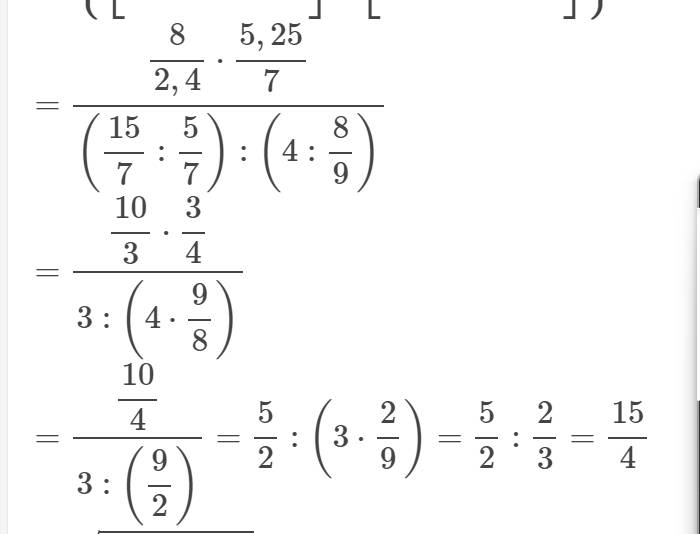cho N =\(\dfrac{9}{\sqrt{x}-5}\) , tìm x ϵ Z để N có giá trị nguyên
Hãy nhập câu hỏi của bạn vào đây, nếu là tài khoản VIP, bạn sẽ được ưu tiên trả lời.


a: Sửa đề: \(A=\dfrac{\sqrt{x}+1}{\sqrt{x}-3}\)
ĐKXĐ: \(\left\{{}\begin{matrix}x>=0\\x\ne9\end{matrix}\right.\)
Để A là số nguyên thì \(\sqrt{x}+1⋮\sqrt{x}-3\)
=>\(\sqrt{x}-3+4⋮\sqrt{x}-3\)
=>\(4⋮\sqrt{x}-3\)
=>\(\sqrt{x}-3\in\left\{1;-1;2;-2;4;-4\right\}\)
=>\(\sqrt{x}\in\left\{4;2;5;1;7;-1\right\}\)
=>\(\sqrt{x}\in\left\{4;2;5;1;7\right\}\)
=>\(x\in\left\{16;4;25;1;49\right\}\)
b: 



a: ĐểA nguyên thì x^2+2x+x+2-3 chia hết cho x+2
=>-3 chia hết cho x+2
=>x+2 thuộc {1;-1;3;-3}
=>x thuộc {-1;-3;1;-5}
b: B nguyên khi x^2+x+3 chia hết cho x+1
=>3 chia hết cho x+1
=>x+1 thuộc {1;-1;3;-3}
=>x thuộc {0;-2;2;-4}

\(P=\dfrac{x-5}{x-4}:\dfrac{x-5}{2x}=\dfrac{2x}{x-4}\)
\(\Rightarrow\)\(\dfrac{2x}{x-4}\in Z\)
\(\Rightarrow\)\(\dfrac{2\left(x-4\right)+8}{x-4}\in Z\)
\(\Rightarrow\)\(2+\dfrac{8}{x-4}\in Z\Rightarrow\)\(\dfrac{8}{x-4}\in Z\Rightarrow x-4\inƯ\left(8\right)=\left\{...\right\}\)
Bạn làm tiếp nhé!

a)ĐKXĐ: \(\left\{{}\begin{matrix}x\ge0\\x\ne1\end{matrix}\right.\)
\(\Rightarrow A=\dfrac{\sqrt{x}\left(\sqrt{x}+1\right)}{\left(\sqrt{x}-1\right)\left(\sqrt{x}+1\right)}-\dfrac{2\left(\sqrt{x}-1\right)}{\left(\sqrt{x}-1\right)\left(\sqrt{x}+1\right)}-\dfrac{2}{\left(\sqrt{x}-1\right)\left(\sqrt{x}+1\right)}\)
\(\Rightarrow A=\dfrac{x+\sqrt{x}}{\left(\sqrt{x}-1\right)\left(\sqrt{x}+1\right)}-\dfrac{2\sqrt{x}-2}{\left(\sqrt{x}-1\right)\left(\sqrt{x}+1\right)}-\dfrac{2}{\left(\sqrt{x}-1\right)\left(\sqrt{x}+1\right)}\)
\(\Rightarrow A=\dfrac{x+\sqrt{x}-2\sqrt{x}+2-2}{\left(\sqrt{x}-1\right)\left(\sqrt{x}+1\right)}\)
\(\Rightarrow A=\dfrac{x-\sqrt{x}}{\left(\sqrt{x}-1\right)\left(\sqrt{x}+1\right)}\)
\(\Rightarrow A=\dfrac{\sqrt{x}\left(\sqrt{x}-1\right)}{\left(\sqrt{x}-1\right)\left(\sqrt{x}+1\right)}\)
\(\Rightarrow A=\dfrac{\sqrt{x}}{\sqrt{x}+1}\)
b) \(x=9\Rightarrow A=\dfrac{3}{3+1}=\dfrac{3}{4}\)
\(x=7-4\sqrt{3}\Rightarrow A=\dfrac{\sqrt{7-4\sqrt{3}}}{\sqrt{7-4\sqrt{3}}+1}=\dfrac{\sqrt{7-2\sqrt{12}}}{\sqrt{7-2\sqrt{12}}+1}=\dfrac{\sqrt{4-2\sqrt{3}\sqrt{4}+3}}{\sqrt{4-2\sqrt{3}\sqrt{4}+3}+1}=\dfrac{2-\sqrt{3}}{2-\sqrt{3}+1}=\dfrac{2-\sqrt{3}}{3-\sqrt{3}}=\dfrac{\left(2-\sqrt{3}\right)\left(3+\sqrt{3}\right)}{\left(3-\sqrt{3}\right)\left(3+\sqrt{3}\right)}=\dfrac{3-\sqrt{3}}{6}\)

a) \(Q=\) \(\left(\dfrac{\sqrt{x}+2}{x+2\sqrt{x}+1}-\dfrac{\sqrt{x}-2}{x-1}\right).\dfrac{\sqrt{x}+1}{\sqrt{x}}\left(x>0;x\ne1\right)\)
\(Q=\left(\dfrac{\sqrt{x}+2}{\left(\sqrt{x}+1\right)^2}-\dfrac{\sqrt{x}-2}{\left(\sqrt{x}-1\right)\left(\sqrt{x}+1\right)}\right).\dfrac{\sqrt{x}+1}{\sqrt{x}}\)
\(Q=\dfrac{\left(\sqrt{x}+2\right)\left(\sqrt{x}-1\right)-\left(\sqrt{x}-2\right)\left(\sqrt{x}+1\right)}{\left(\sqrt{x}+1\right)^2\left(\sqrt{x}-1\right)}.\dfrac{\sqrt{x}+1}{\sqrt{x}}\)
\(Q=\dfrac{x+\sqrt{x}-2-x+\sqrt{x}+2}{\left(\sqrt{x}+1\right)^2\left(\sqrt{x}-1\right)}.\dfrac{\sqrt{x}+1}{\sqrt{x}}\)
\(Q=\dfrac{2\sqrt{x}}{\left(\sqrt{x}+1\right)^2\left(\sqrt{x}-1\right)}.\dfrac{\sqrt{x}+1}{\sqrt{x}}\)
\(Q=\dfrac{2}{\left(\sqrt{x}+1\right)\left(\sqrt{x}-1\right)}\) \(=\dfrac{2}{x-1}\) \(\left(đpcm\right)\).
b) Để \(Q\in Z\) <=> \(\dfrac{2}{x-1}\in Z\) <=> \(x-1\inƯ\left(2\right)=\left\{1;-1;2;-2\right\}\)
Ta có bảng sau:
| x -1 | 1 | -1 | 2 | -2 |
| x | 2(TM) | 0(ko TM) | 3(TM) | -1(koTM) |
Vậy để biểu thức Q nhận giá trị nguyên thì \(x\in\left\{2;3\right\}\)


Để A nguyên thì \(\sqrt{x}-1\inƯ\left(5\right)\)
Mà Ư(5)={1;-1;5;-5}
=> \(\sqrt{x}-1\in\left\{1;-1;5;-5\right\}\)
Ta có bảng sau:
| \(\sqrt{x}-1\) | 1 | -1 | 5 | -5 |
| \(\sqrt{x}\) | 2 | 0 | 6 | -4 |
| x | 4 | 0 | 36 | loại |
Vậy \(x\in\left\{0;4;36\right\}\)

Để A là số nguyên thì \(x-5⋮9-x\)
\(\Leftrightarrow4⋮x-9\)
\(\Leftrightarrow x-9\in\left\{1;-1;2;-2;4;-4\right\}\)
hay \(x\in\left\{10;8;11;7;13;5\right\}\)
Lời giải:
Với $x$ nguyên, để $N$ nguyên thì $\sqrt{x}-5$ là ước của $9$
$\Rightarrow \sqrt{x}-5\in\left\{\pm 1;\pm 3;\pm 9\right\}$
$\Rightarrow \sqrt{x}\in\left\{4; 6; 8; 2; 14; -4\right\}$
Vì $\sqrt{x}\geq 0$ nên: $\sqrt{x}\in\left\{4; 6; 8; 2; 14\right\}$
$\Rightarrow x\in\left\{16; 36; 64; 4; 196\right\}$